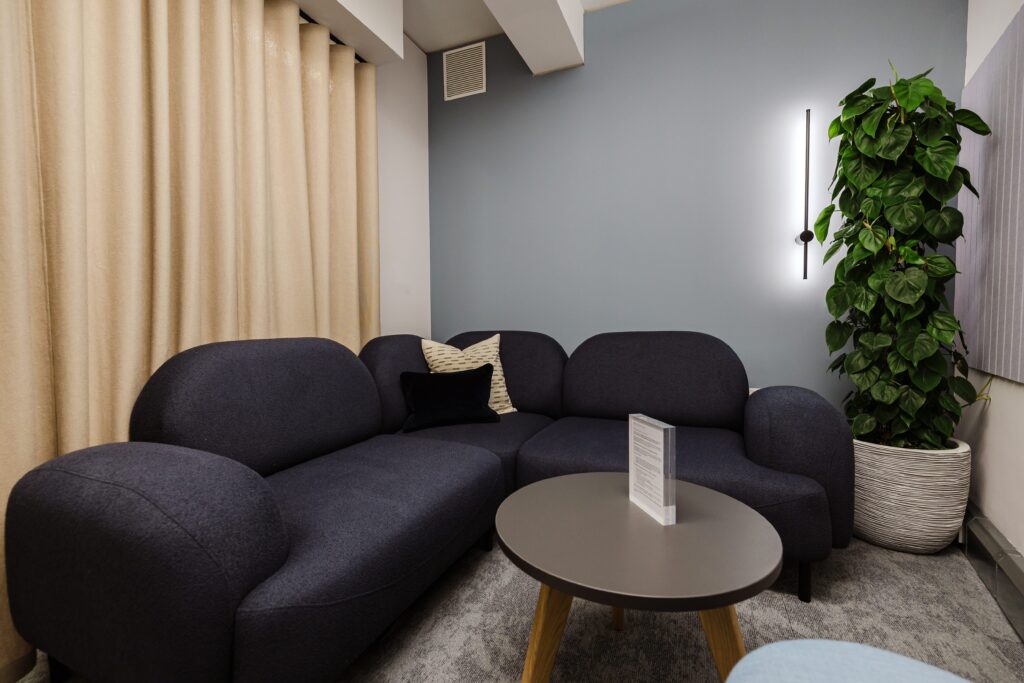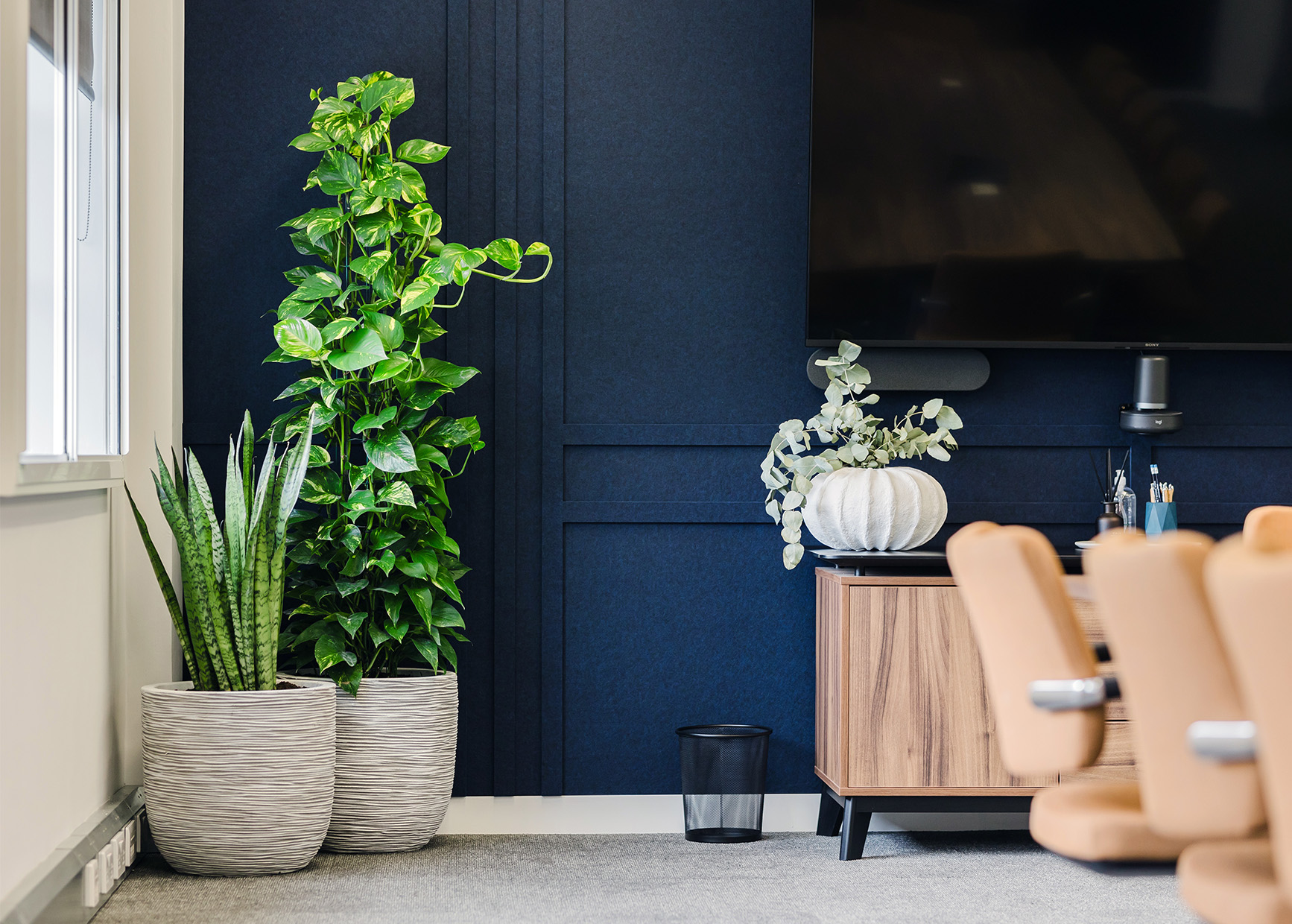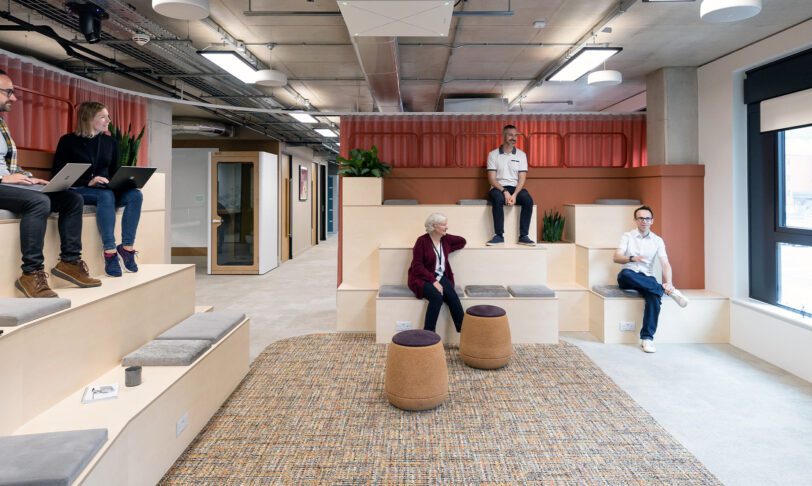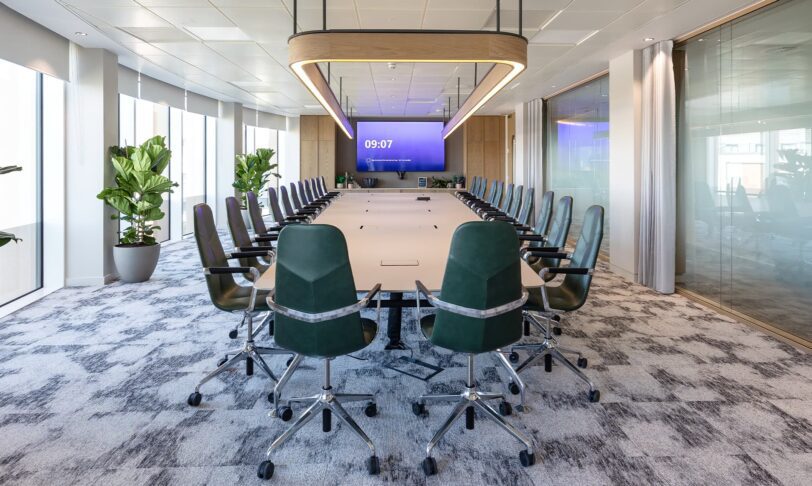Office design tips to improve workplace wellbeing
Companies with RTO mandates are navigating a working landscape that has changed profoundly in recent years. It’s becoming increasingly clear how necessary it is for a workplace to offer more than just the basic amenities. In short, an office needs to be a place where people feel genuinely enriched and happy (see our guide to workplace happiness for further insight) – and workplace wellbeing is a core tenet of this.
A well-designed office goes beyond aesthetics and functionality – it promotes physical and mental health and increases employee fulfilment, engagement and productivity. Through thoughtful office design, businesses can create environments that employees are happy to return to, offering benefits they don’t get from working at home.
It’s been well documented how wellbeing-focused design elements help foster a positive and productive work atmosphere. So let’s explore some essential office design tips to incorporate into your workplace wellbeing strategy.
The importance of workplace wellbeing
To put it plainly, investing in wellbeing is the right thing to do in terms of companies’ duty of care to their employees. But beyond that, a people-focused workplace that nurtures potential and encourages a healthy work-life balance will also benefit in terms of the bottom line.
Organisations with robust wellbeing strategies see tangible benefits such as reduced absenteeism, lower turnover, and increased productivity. We must also consider both the direct and financial impact of reducing burnout and employee disengagement.
Ultimately, expectations around wellbeing in the workplace have changed – and companies that show a clear commitment to wellbeing are more likely to attract and retain the most talented and in-demand people.
Office design considerations for wellbeing
Lighting and natural light
Office lighting plays a crucial role in office wellbeing, impacting both mood and energy levels. Natural light, in particular, is known to reduce stress and improve wellbeing in a myriad of ways – from enhanced focus to more healthy sleep patterns.
Companies should do what they can to let the light in, prioritising large windows, skylights and transparent barriers. However, for areas where natural light is limited, the next best thing is full-spectrum lighting that mimics daylight.
Heating and temperature
In our recent guide to the ideal office temperature, we found the wider discussion to be more varied and nuanced than you’d expect. For instance, there’s strong evidence to suggest that women are being left out in the cold…
While there isn’t a hard and fast rule for every workplace, the sweet spot for focus and comfort tends to be about 21°C and 23°C. That said, the consensus seems to be that it’s more about giving employees more control over their immediate surroundings, so temperature preferences should ideally be taken on a case-by-case basis.
Air quality
Air quality is one of the most overlooked factors in workplace design, despite the direct impact of air quality on wellbeing. Poor ventilation and indoor air quality, for instance, can cause irritation, drowsiness, headaches and issues with concentration. Fortunately, this can be resolved pretty quickly by installing proper ventilation systems and air purifiers.
Space and movement
This may sound obvious, but office space planning is not always just about size or spreading out desks. Modern offices should encourage an ergonomic flow of movement, providing ample space for employees to walk around, stretch, and take breaks. Open-plan offices that balance collaborative spaces with quiet zones promote interaction across teams while also allowing for freedom of movement.
Office colours
Colour psychology can play a significant role in designing for wellbeing. According to studies from Bryden Wood on wellbeing and architecture, colours can have a positive effect on mood and productivity; cool tones such as blues and greens promote calmness and concentration, while brighter, warmer tones like reds and oranges can boost energy and creativity. Want to find out more? Our guide to how colour affects workplace productivity delves into this topic in much more detail.
Office design features for wellbeing
Biophilic office design
We’ve been waxing lyrical about the benefits of biophilic design for quite some time now, but it’s worth repeating the extent to which incorporating plants and living materials into your workspace can reduce stress and increase productivity. Furthermore, given what we just mentioned about colour psychology, all those shades of green can also help foster a more tranquil and calming atmosphere.
Flexible office design
A hallmark of designing for wellbeing is giving employees the ability to tailor their environment to their needs and preferences. This can go beyond individual workstations to using movable furniture and multi-functional spaces for effective collaboration or solo work when needed. Autonomy is key to flexible office design, and this can go a long way in enhancing not only employees’ personal wellbeing but also motivation and satisfaction in the workplace.
Inclusive office design
Inclusion is fundamental to wellbeing, as it means lifting certain barriers that people may face in a traditional work environment that may prevent them from doing their best. Inclusive office design features can vary, from making the office as accessible as possible to those with reduced mobility to creating quiet zones for people who may experience sensory overload. Ultimately these can create a more enriching and productive space for everyone – showing how designing for inclusivity often makes workspaces more innovative and efficient as a whole.
Office facilities for wellbeing
Dedicated wellbeing rooms
Incorporating wellbeing rooms into office design means employees have a peaceful place to recharge. These rooms are ideal for relaxation, meditation, or quiet reflection, helping employees manage stress and maintain their mental wellbeing throughout the workday. Features like comfortable seating, soft lighting, and calming decor can enhance the tranquil atmosphere of these spaces.
We incorporated a dedicated wellbeing room into a recent office fit-out for Stone King. This was part of a wider wellbeing strategy that included an abundance of planting and natural light, not to mention adjustable desks to ensure a comfortable and inclusive space for everyone.

Prayer rooms
Spiritual wellbeing is one of what has been described as the ‘7 Types of Wellness’, and supporting employees’ diverse spiritual needs should be considered a priority. Prayer rooms offer somewhere that employees can focus on fulfilling their spiritual needs so they can be relaxed and reinvigorated in a space separate from the hustle and bustle of the modern workplace. Dedicated prayer facilities also reaffirm a commitment to diversity and inclusion, which can have a profound impact on workplace wellbeing.
Exercise facilities
Offices that include gym facilities, yoga studios, or even simple exercise spaces encourage employees to stay active. This type of commitment to physical wellbeing can boost employees’ mood and productivity while also reducing stress. While not every office may opt for dedicated spaces for exercise, they can still encourage physical movement by incorporating things such as standing desks, delineating specific zones for different types of work or promoting cycle-to-work schemes.
Designing for wellbeing with Interaction
Designing an office that promotes wellbeing is about more than creating a visually appealing space – it’s about crafting an environment where employees can thrive on all fronts. This is central to our work in office design and fit-outs.
Our team can work with you to create a wellbeing strategy that prioritises the unique needs and requirements of your employees. We can then channel that into a brand-new vision for your office and execute that with stellar craftsmanship and impeccable attention to detail. We also pride ourselves on offering excellent client care post-handover so you can feel supported in your efforts to improve workplace wellbeing.
Is it time to revolutionise your workspace? Say hello by scheduling a chat with Charlie our Relationship Manager, signing up for our newsletter or downloading one of our industry whitepapers for additional guidance.



